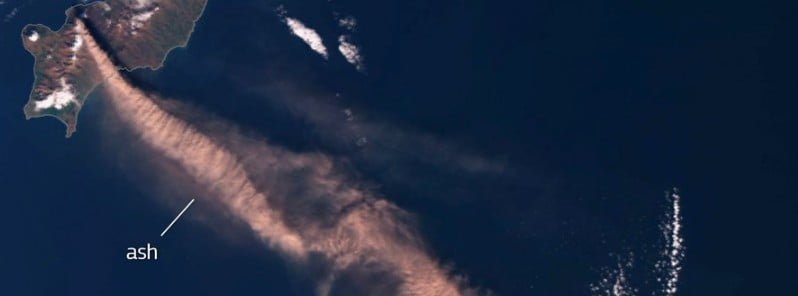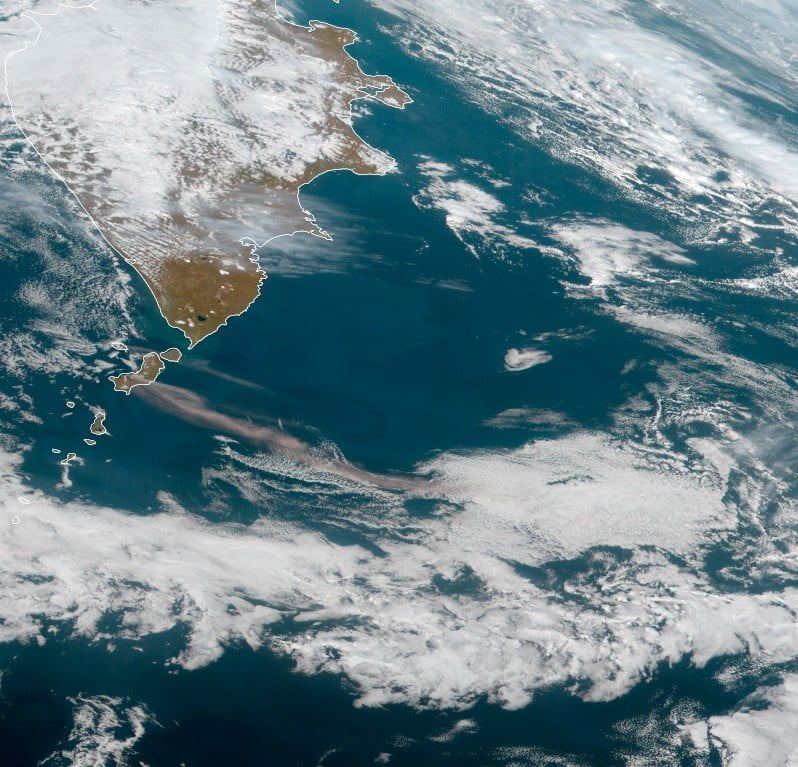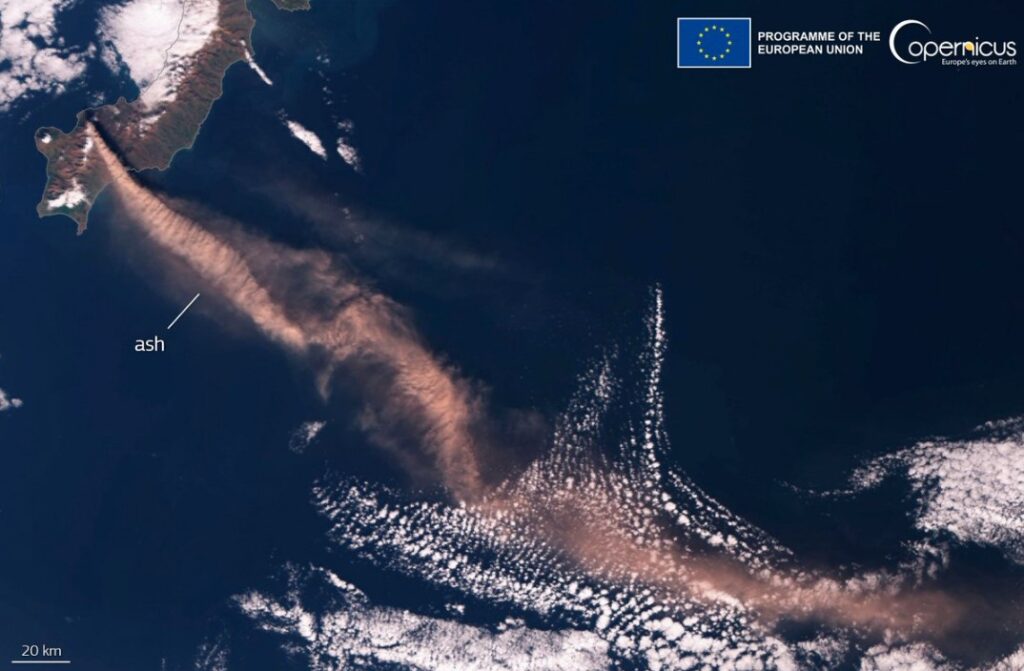Massive ash plume from Chikurachki volcano drifting over the Pacific Ocean

An explosive eruption began at Chikurachki volcano at around 15:10 UTC on October 15, 2022, producing an eruptive column up to 4.5 km (14 700 feet) above sea level. The Aviation Color Code was raised from Green to Orange.
By the end of the day, the plume extended about 345 km (214 miles) ESE of the volcano. At 04:20 UTC on October 16, the plume was extending up to 520 km (323 miles) ESE.1
Ash explosions up to 6 km (19 700 ft) a.s.l. could occur at any time, KVERT warns. Ongoing activity could affect low-flying aircraft.




Geological summary
Chikurachki, the highest volcano on Paramushir Island in the northern Kuriles, is actually a relatively small cone constructed on a high Pleistocene volcanic edifice. Oxidized basaltic-to-andesitic scoria deposits covering the upper part of the young cone give it a distinctive red color.
Frequent basaltic plinian eruptions have occurred during the Holocene.
Lava flows from 1 781 m (5 843 feet) high Chikurachki reached the sea and form capes on the NW coast; several young lava flows also emerge from beneath the scoria blanket on the eastern flank.
The Tatarinov group of six volcanic centers is located immediately to the south of Chikurachki, and the Lomonosov cinder cone group, the source of an early Holocene lava flow that reached the saddle between it and Fuss Peak to the west, lies at the southern end of the N-S-trending Chikurachki-Tatarinov complex.
In contrast to the frequently active Chikurachki, the Tatarinov volcanoes are extensively modified by erosion and have a more complex structure.
Tephrochronology gives evidence of only one eruption in historical time from Tatarinov, although its southern cone contains a sulfur-encrusted crater with fumaroles that were active along the margin of a crater lake until 1959.2
References:
1 VONA – KVERT – Issued on October 15 and 16, 2022
2 Chikurachki – Geological summary – GVP
Featured image: Volcanic ash plume produced by Chikurachki volcano on October 15, 2022. Credit: Copernicus EU/Sentinel-3

Commenting rules and guidelines
We value the thoughts and opinions of our readers and welcome healthy discussions on our website. In order to maintain a respectful and positive community, we ask that all commenters follow these rules:
We reserve the right to remove any comments that violate these rules. By commenting on our website, you agree to abide by these guidelines. Thank you for helping to create a positive and welcoming environment for all.